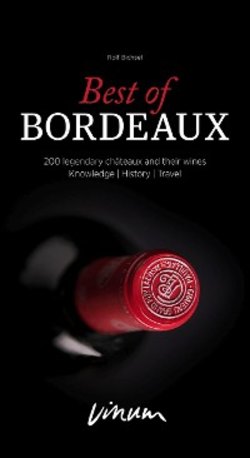Читать книгу Best of Bordeaux - Rolf Bichsel - Страница 33
Оглавление33
Class society History
the partitioning of an estate, what is a chateau other than a flash in the pan, an
extravagant structure which perishes with its owners without leaving the slight-
est reminder.' How can he be so right and yet so utterly wrong!
Class society
On 18 April 1855, the Bordeaux Syndicate of Wine Brokers addressed a letter
to the Bordeaux Chamber of Commerce which began as follows: ‘Dear sirs, on
the fifth of this month we were honoured to receive a letter from you in which
you asked us to send you a complete list of classified red wines in the Gironde
and of our great white wines. We have collected all the information we need
in order to comply with your request, and are able to provide you with the at-
tached list.' The list contained 56 names of red wine estates in the (Haut) Médoc
region and one from Graves (Haut-Brion) as well as 21 names of (sweet) white
wines from Sauternes and Barsac, all divided into five categories from 1ème to
5ème Cru Classé: this was the handwritten original of the oldest and most fa-
mous of all the o
ffi
cial wine rankings, namely the 1855 classification, created on
the occasion of the Universal Exposition in Paris and adopted by head of state
Napoleon III. One estate (Cantemerle) was left out and subsequently added a
year later, and in 1973 an estate moved up from the second category to the first:
Mouton-Rothschild. Other than this, the classification has never been changed,
and the fact that it has since grown to 61 red and 27 white wine estates is the
result of estate partitioning and the merging of certain estates with others.
The history of the classification alone would fill volumes. Let us simply note
that this cataloguing of Médoc wines plus Haut-Brion into two, then three, and
ultimately five categories was already taking place in the early 18th century.
‘Crus' (or ‘growths', meaning wines whose grapes were grown in a speci
fi
c loca-
tion) were described as ‘Grand' (‘great') if they di
ff
ered signi
fi
cantly from ordi-
nary everyday wines (consequently known as Crus Ordinaires) in terms of both
quality and price, and were thus reserved for a financially stronger class of pur-
chasers. The four current Premiers Crus Margaux, Latour, Lafite and Haut-Brion
were described by an English wine merchant as ‘topping growths' as early as
1723. In 1740, a list of wine-producing municipalities was published giving the
three categories of Premier, Second and Troisième Cru. The Premiers include
Pessac (or rather les Crus de Pontac, in the plural), Pauillac, Saint-Julien, Mar-
gaux, Sauternes and Barsac. The wine enthusiast, French ambassador and fu-
ture American President Thomas Jefferson visited Bordeaux in 1787 and scrib-
bled a list of the best wines in his diary – with three categories from Premier
to Troisième Cru. He is therefore occasionally described as the founder of the
Bordeaux classification, and a couple of the estates Jefferson listed still use him
as proof that they were already famous and sought-after. This is not entirely un-
